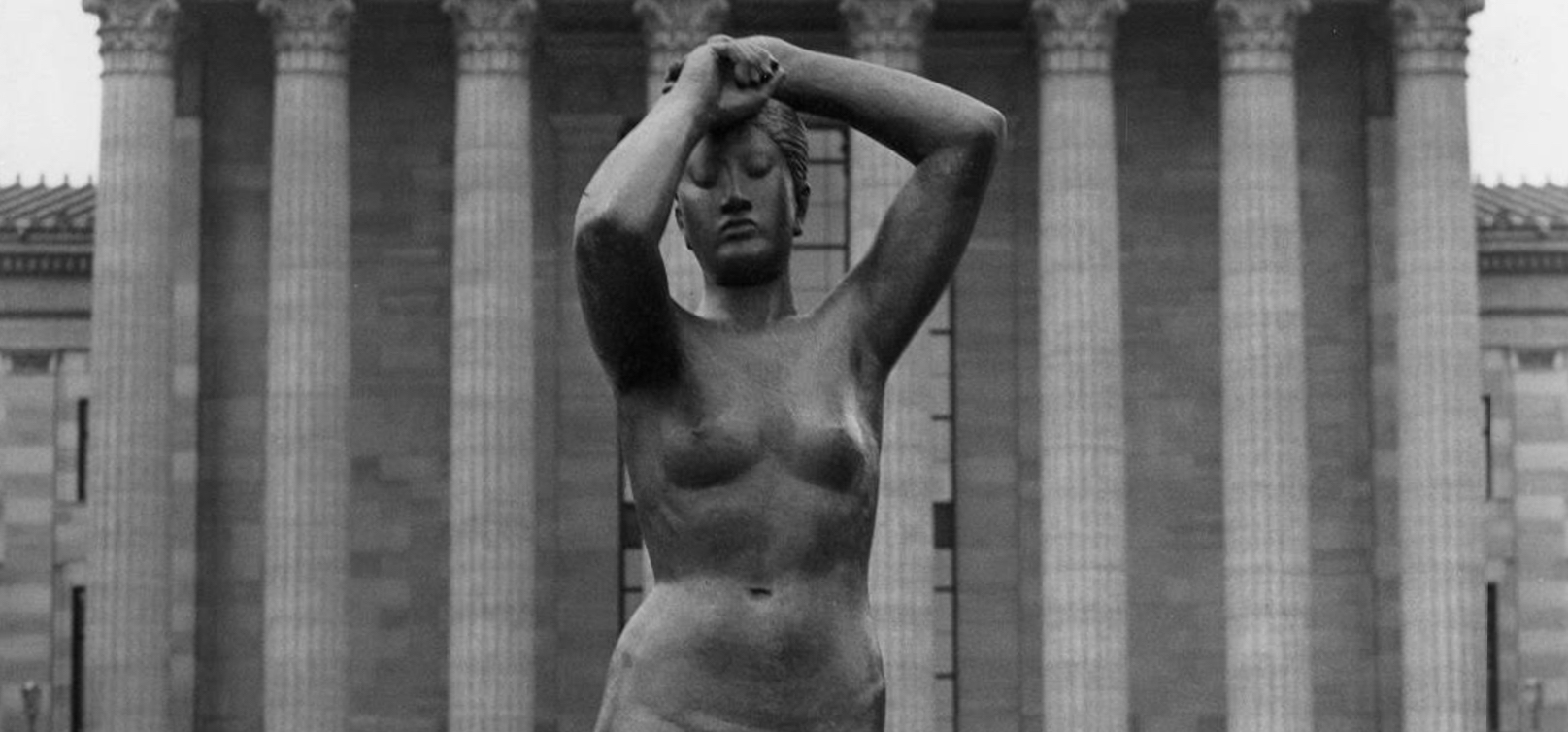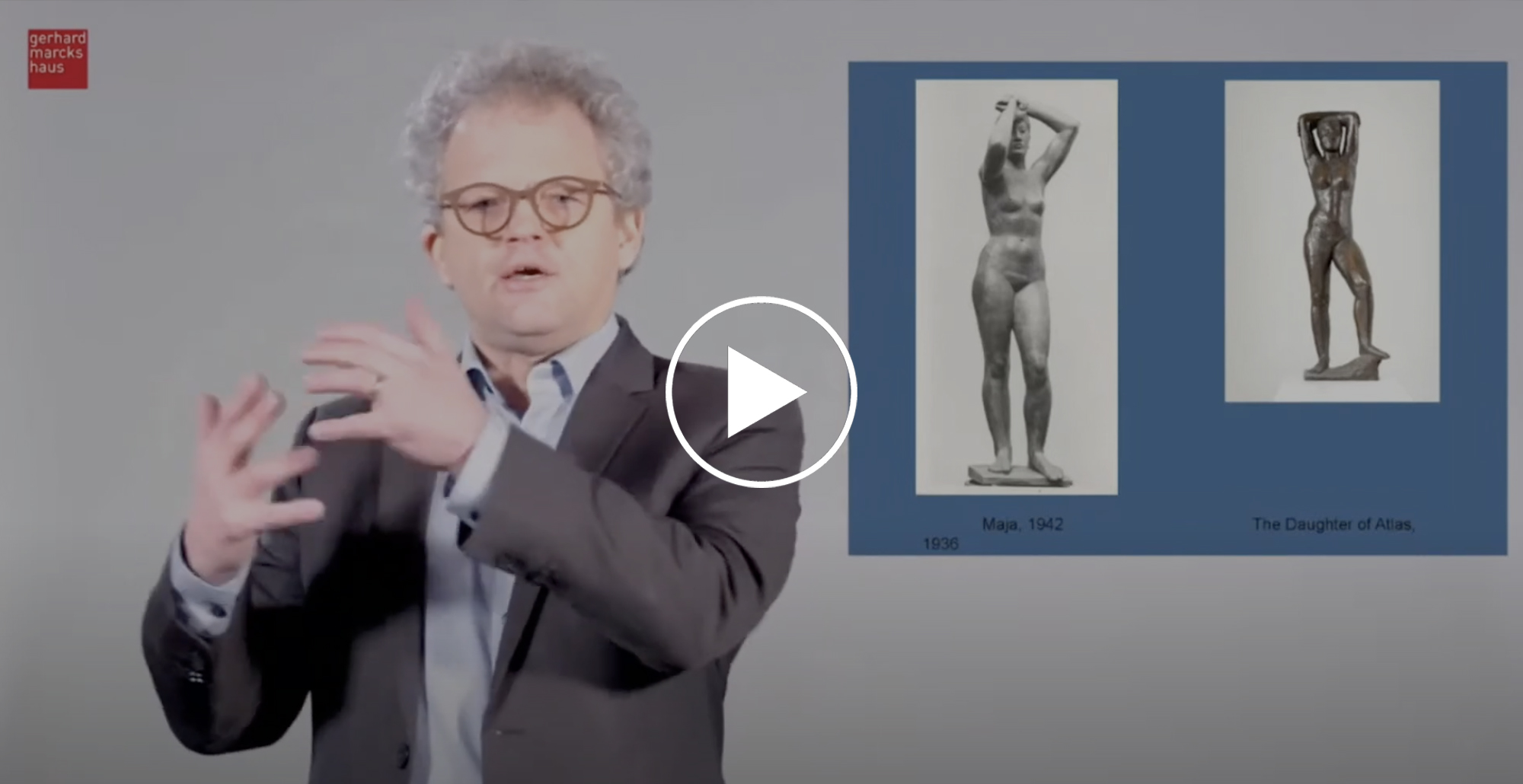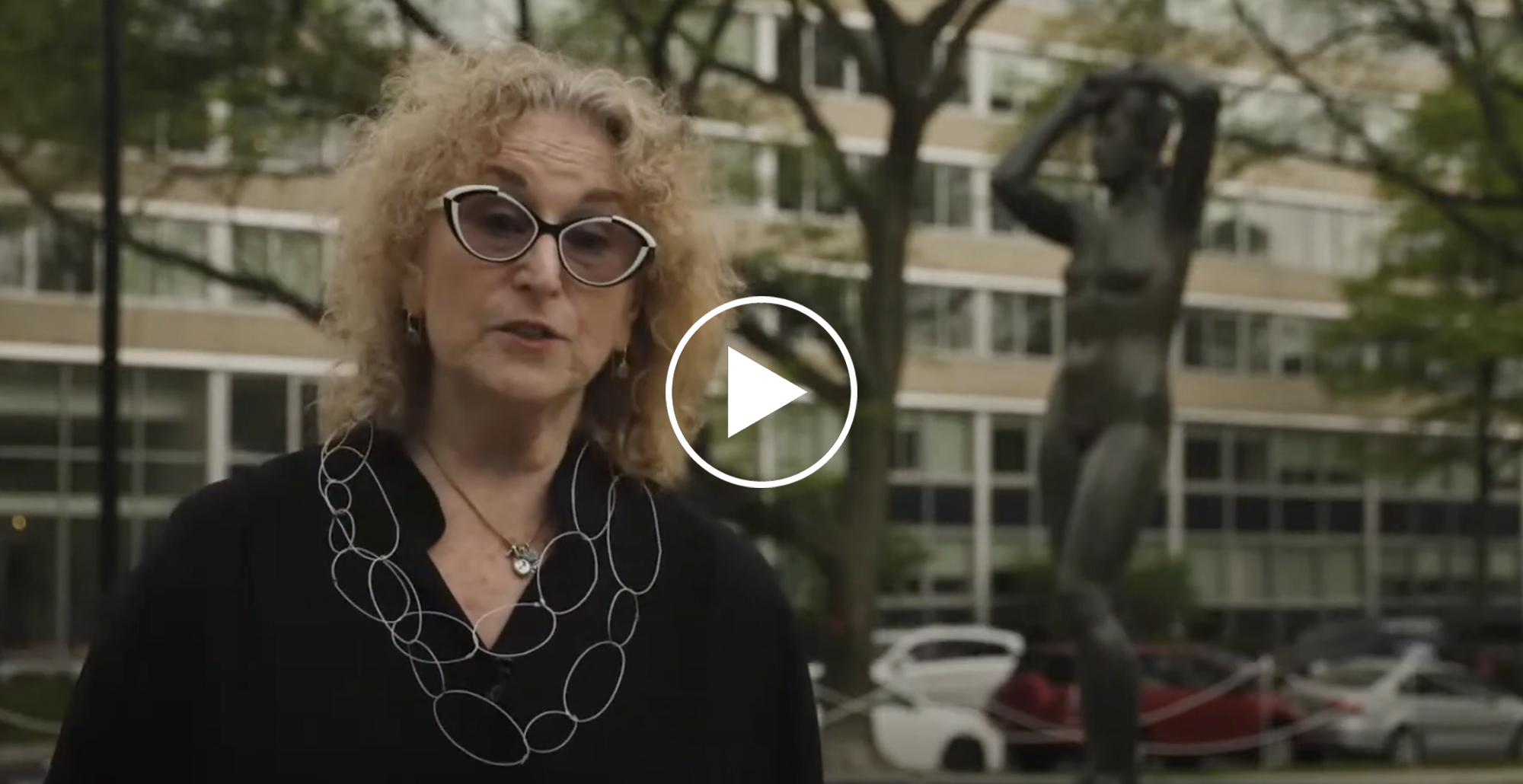Thanks to everyone who tuned into our live event! We invite you to watch or rewatch the video on YouTube or Facebook:
CLICK HERE TO WATCH ON YOUTUBE
CLICK HERE TO WATCH ON FACEBOOK
Join the Association for Public Art (aPA) for our annual spring event to explore the life and times of the German artist Gerhard Marcks and his sculpture Maja (1942) – an important work of art that recently returned to Philadelphia’s Benjamin Franklin Parkway. This free and virtual event includes keynote presentations by Dr. Arie Hartog, Director of the Gerhard-Marcks-Haus in Bremen, Germany, and Penny Balkin Bach, Executive Director & Chief Curator of the Association for Public Art.
This marks the Association for Public Art’s 149th Annual Meeting. See our previous speakers here.
Presentations:
DR. ARIE HARTOG is Director of the Gerhard-Marcks-Haus in Bremen, Germany, a museum for modern and contemporary sculpture inspired by the work of Gerhard Marcks (1889-1981). His presentation provides an in-depth look at the German artist’s struggles before and during WWII, the creation of Maja, and its survival from Nazi destruction.
PENNY BALKIN BACH is Executive Director & Chief Curator of the Association for Public Art. She is known for her work with artists and innovative approaches to connecting public art with its audiences. Bach shares the fascinating story behind Maja’s debut in Philadelphia more than 70 years ago.
Please email apa@associationforpublicart.org if you have any questions about this event.
Historic photo at top courtesy Temple University’s Special Collections Research Center


